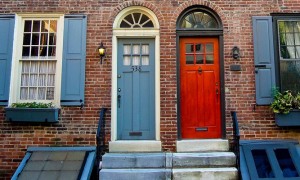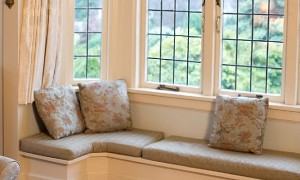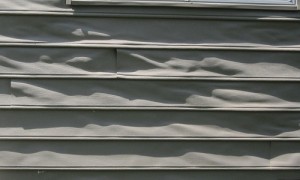Do you feel as if the weather is actually inside your home? If so, odds are that your windows play a substantial role in allowing outdoor heat or cold into the house. Installing windows with state of the art materials could make all the difference in regulating household temperatures and monthly bills.
Extreme heat in warm months and strong winds in the winter season leave your Las Vegas home vulnerable if you don’t install windows that can buffer these elements. As a major component of your home’s building envelope, windows should function as dividers between interior and exterior environments, thereby helping regulate temperature, air flow, and moisture control within the structure.
Window Materials
Once upon a time, most window frames were of the aluminum variety. While aluminum is a fairly durable substance, the metal frames conduct summer heat and winter cold straight into the house. They also tend to produce condensation. Aluminum is certainly no match for Southern Nevada’s sun, making this window product particularly ineffective in the desert climate.
During Reagonomics in the 1980s, MTV and vinyl windows all made their debut. Without having the impact of the 24-hour video music channel, vinyl windows nevertheless proved their worth, and Las Vegas homeowners acquired a more powerful weapon in their battle against the intense heat. Without the conductive properties of aluminum, vinyl lets far less outdoor weather indoors.
It Takes Great Panes
The window pane began its existence with a clear glass single pane that generally accompanied your old aluminum frame window. These panes provide a perfectly pretty view but reflect the heat or cold of the prevailing weather, which means your house also absorbs these external influences. With the advent of vinyl came double-paned or insulated windows and sometimes even triple-paned windows. Argon gas, or the more costly but also more energy efficient krypton gas, fills the space between panes, and some windows contain a mixture of the two.
Final Coat
Capping off today’s most energy efficient windows, metallic coatings applied to one or two of the glass surfaces promotes low emissivity or “Low E.” You’ll definitely want high powered Low E glass when installing windows in Las Vegas. They provide high energy efficiency by reducing heat entering your home by 70-75 percent. These windows still allow visible light transmission through the panes so you can still enjoy the abundant Las Vegas sunshine that brightens your home. However, think twice if tempted to consider aftermarket tinting when installing windows. This voids any manufacturer warranty protection against glass breakage resulting from heat stress.
Consumer Resources
The National Fenestration Rating Council (NFRC) created a product labeling system designed to assist consumers in understanding energy measurements when installing windows:
- U-Factor: rate of heat loss; how well the window resists heat flow
- Solar Heat Gain Coefficient (SHGC): the amount of solar heat transmitted through the window
- Visible Transmittance (VT): the amount of visible light transmitted through the window
- Light-to-Solar Gain (LSG): efficiency in transmitting daylight while blocking heat gains
- Air Leakage (AL): amount of airflow through the seams
- Condensation Resistance (CR): outside surface of window’s resistance to condensation
Look for Energy Star products using these ratings when installing windows in your Las Vegas home. Replacing older products not only increases energy efficiency to save you money, it also increases the overall value of your home when it comes time to sell.
[cf]skyword_tracking_tag[/cf]






